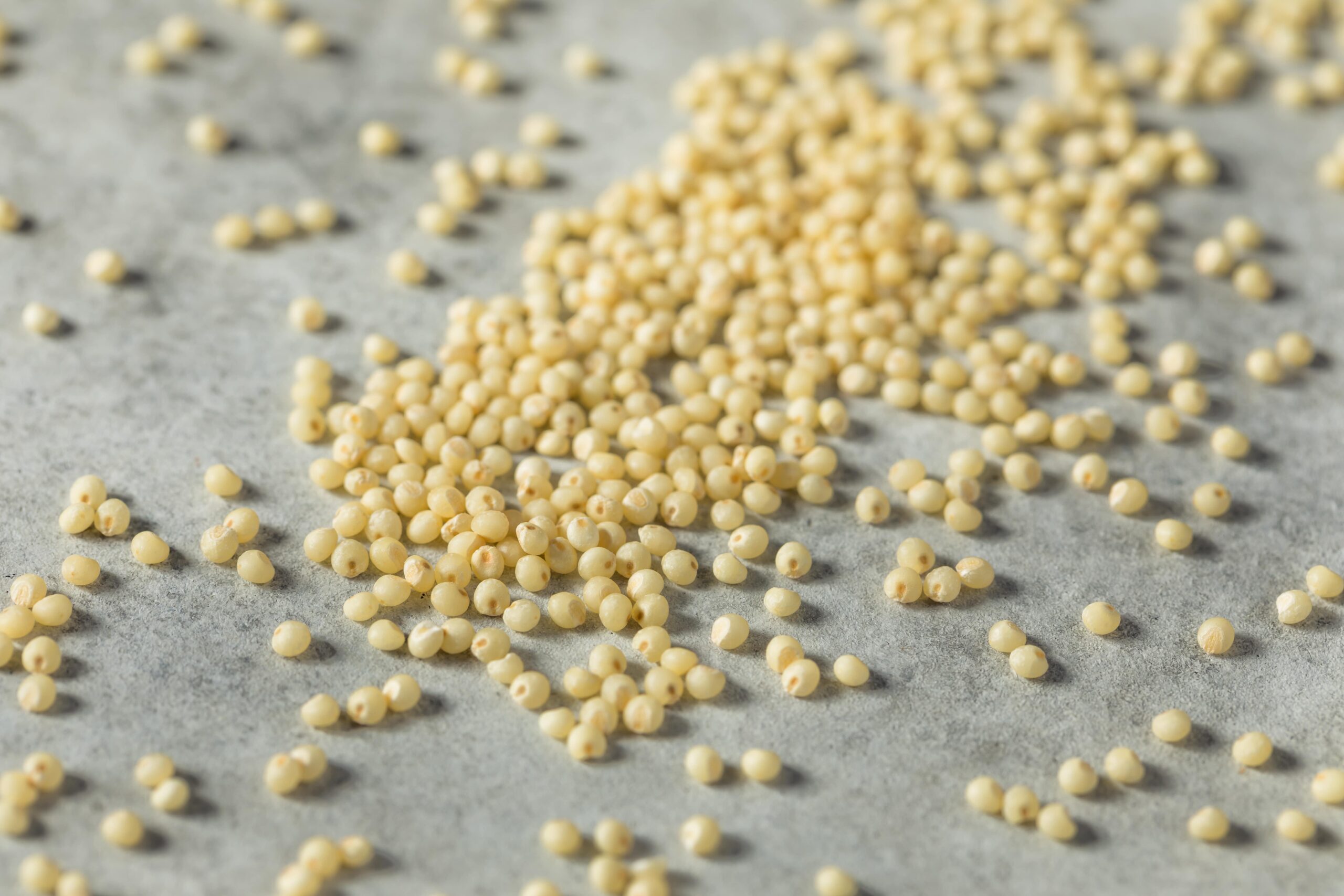
Organic millet is the star of the show when it comes to nutritious grains. Millet has gained popularity as a healthy alternative to other grains because of its high nutritional content, excellent flavour, and numerous health advantages. Here, we’ll learn all about organic millet, from its delicious uses in the kitchen to its health benefits and the various ways it can be included into your diet. Indulge your sense of taste and give your body the nourishment it needs as you set off on a voyage of flavour.
The Prodigious Past of Millet
Millet has been a fixture in numerous cultures for countless centuries. It is believed to have originated in Africa and has since spread to numerous regions worldwide. Ancient civilizations such as the Egyptians, Chinese, and Indians incorporated millet into their diets due to its nutritional value. In many countries, millet remains an integral element of traditional dishes.
Nutritional Superpower
For good reason, millet is often referred to as a nutritional powerhouse. It is a good source of fibre, protein, vitamins, and minerals. This gluten-free grain is rich in complex carbohydrates, making it an excellent source of energy. In addition, millet is rich in antioxidants, which protect the body from damaging free radicals. Incorporating millet into your diet can enhance your digestion, energy levels, and well-being as a whole.
Exploration of Flavours
The delectable and varied flavours of organic millet are one of its most alluring features. Millet provides a distinct culinary experience, ranging from a subtly nutty flavour to a slightly sweet and creamy texture. Whether you favour savoury or sweet foods, millet can be prepared in a variety of methods to suit your preferences. It can be used as a pilaf base, incorporated into soups and stews, and even transformed into tantalising desserts. Millet’s versatility makes it a thrilling ingredient with which to experiment in the kitchen.
Cooking with Millet
Cooking with millet is a breeze, and its preparation is similar to that of rice or quinoa. To unlock its full potential, follow these simple steps:
Rinse and Drain: Before cooking millet, rinse it thoroughly under cold water to remove any impurities. Drain well.
Toast for Flavor: For a nuttier taste, you can toast the millet in a dry skillet over medium heat for a few minutes before cooking.
Cooking Ratio: To cook millet, use a ratio of 2 cups of liquid (such as water or broth) for every 1 cup of millet.
Simmer and Fluff: Bring the liquid to a boil, then reduce the heat and simmer for about 20 minutes or until the millet is tender. Once cooked, fluff it with a fork.
Health Benefits of Organic Millet
The health of the Digestive System: The high fibre content of millet promotes healthy digestion and prevents constipation. In addition, it can promote a healthy digestive tract by feeding beneficial intestinal flora.
Millet has a low glycemic index, which means it does not cause a rapid increase in blood sugar levels. This makes it an excellent option for diabetics and those seeking to maintain stable blood sugar levels.
Due to its high fibre content and low-calorie count, millet can aid in weight management by providing a sensation of satiety and reducing the desire for unnecessary snacking.
Magnesium, phosphorus, manganese, and B vitamins are just a few of the essential vitamins and minerals that are abundant in organic millet, which is also a rich source of B vitamins. These nutrients are essential for a variety of physiological functions, thereby promoting health and well-being.
Millet in Your Daily Diet
Now that you know millet is good for you, it’s time to experiment with the many ways it may be used in your diet:
Pilafs made with millet make a healthy and filling meal. Cooked millet is tossed gently with sautéed veggies and seasonings. Indulge in as a filling main meal or savoury condiment.
Millet salads may be made by mixing cooked millet with fresh produce, herbs, and condiments for a light and healthy meal. Millet improves the texture and flavour of any salad it is added to.
Millet porridge is a hearty breakfast cereal made from millet. Millet can be prepared with either milk or water; once cooked, it can be topped with fruit, nuts, honey, or any other sweetener of your choosing.
Millet flour is a gluten-free option that may be used in place of wheat flour to make a wide range of baked goods. Millet flour may be used as a healthy substitute in many of your usual recipes.
Make some tasty millet sweets by using your imagination in the kitchen. Puddings, cakes, and even energy bars may all be made using millet. Don’t hold back on your creative thinking.
Conclusion
In conclusion, organic millet is a delightful grain that not only tantalizes the taste buds but also nourishes the body with its exceptional nutritional profile. Its rich history, diverse flavors, and health benefits make it a standout choice for those seeking a wholesome and flavorful addition to their meals. By exploring the various ways to cook and incorporate millet into your diet, you can unlock a world of culinary possibilities while reaping the rewards of improved health and well-being.
